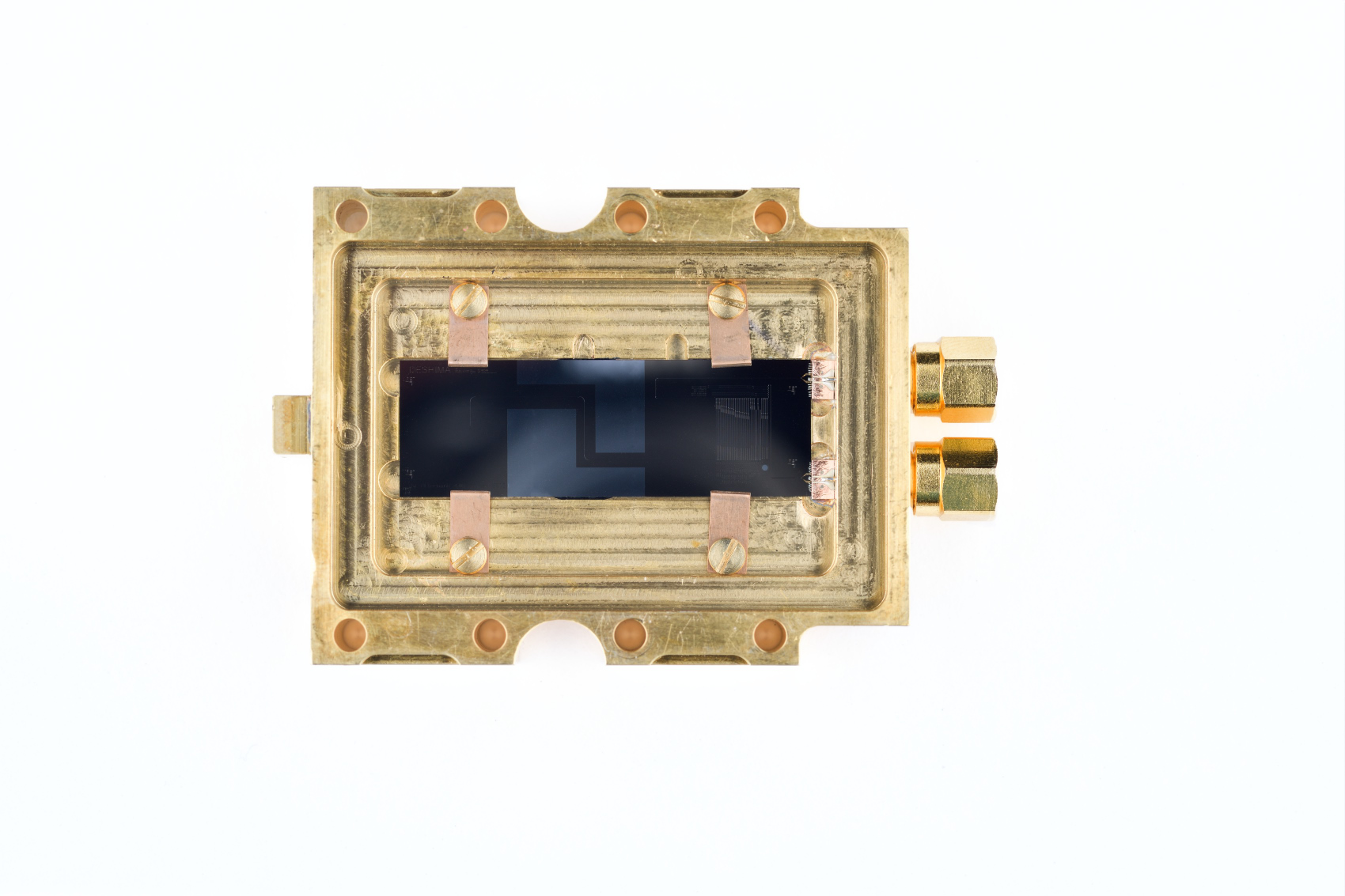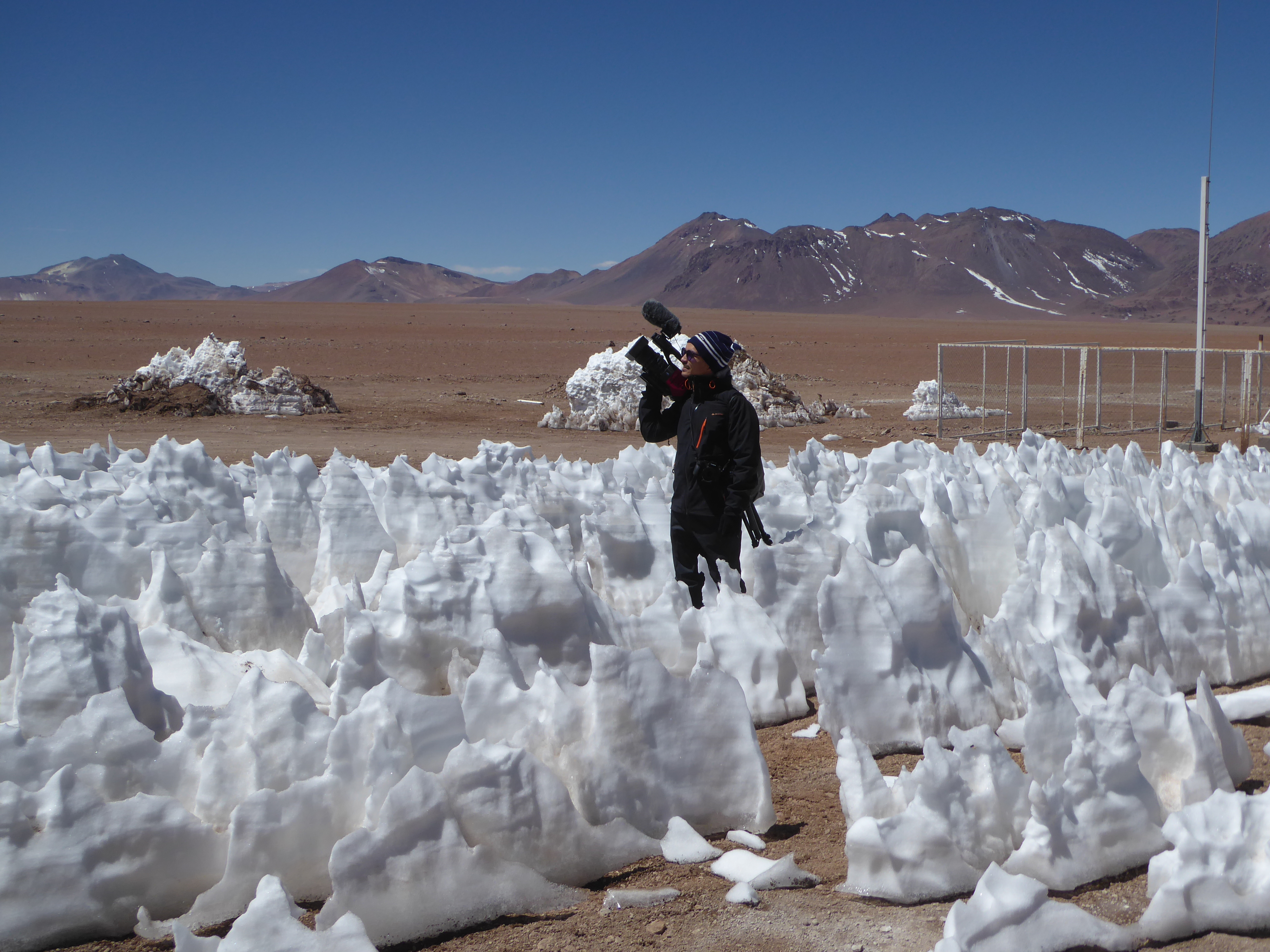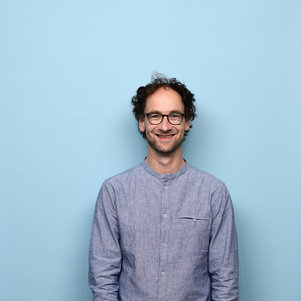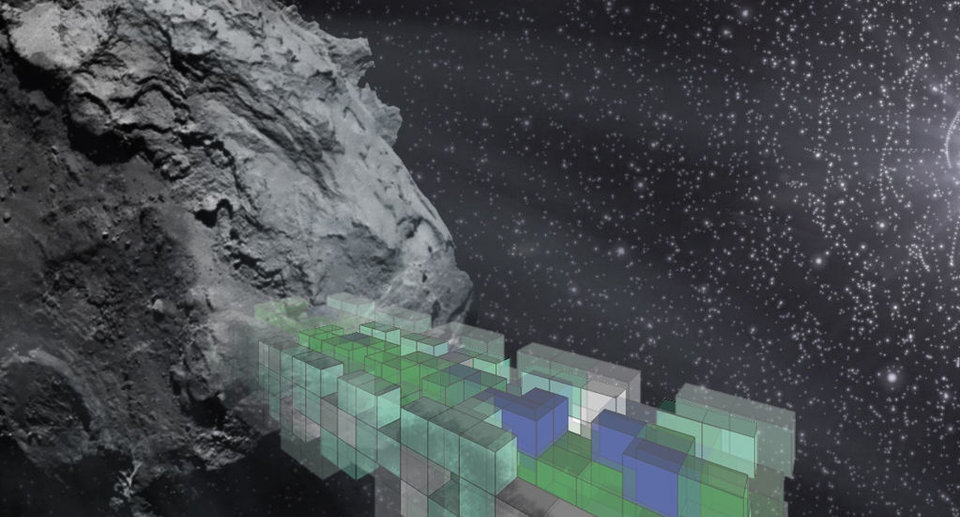Questions like How did the universe come into being? and Where do we, humans, come from? can be approached in two ways: philosophically and scientifically. Scientifically this is done by looking at light – very old light. ‘And to do that you need superconducting detectors and sensitive measuring equipment,’ says Professor Jochem Baselmans. ‘Only then can you get answers to what may be the most relevant questions in our universe.’
Mankind has been trying to understand the universe for centuries. The early Babylonians made an attempt, but the best-known example is perhaps Galileo Galilei. In 1610, he used a telescope made by spectacle maker Hans Lippershey from the Dutch town of Middelburg to gaze at the stars. ‘Galileo bought the telescope at a market in Venice, disassembled it and made it thirty times more powerful,’ says Baselmans. ‘Galileo spent days studying the four great moons of Jupiter until he was certain: the moons orbited Jupiter. His discovery demonstrated that not everything in space revolves around the Earth and undermined the geocentric world view that was considered true at that time. The Galileo example shows that new instruments lead to new discoveries, and that new discoveries lead to new insights. Since then, astronomy has been the branch of science in which new technology is applied the fastest by far.’
New insights
New instruments enable us to get a better understanding of the way the universe came into being. According to Baselmans, this technology is simply indispensable. ‘After all, you can't just fly through the universe or study a star in a laboratory. Because observation is quite difficult in astronomy (huge distances, weak signals) and experimentation is not possible (having two galaxies collide to see what happens), technology is the key.’ Until the 1970s, the focus was on photographic plates, but development of Charge Coupled Devices, known as CCDs, marked the dawn of a new era: that of highly sensitive light detectors. ‘All of a sudden, astronomers were able to capture images and spectra of very weak objects. Just try to find a new planet or a new asteroid: you have to detect movement among one of those ten-million dots above you. This is much easier to do with a computer than with photos.’
The Galileo example shows that new instruments lead to new discoveries, and that new discoveries lead to new insights.
Best in the world
This semiconductor technology can be purchased. ‘There’s a whole industry behind it,’ Baselmans explains. ‘It is used by Ministry of Defence, and also by commercial photographers. But much of the radiation from the universe is not visible light and is emitted at other wavelengths. An important example is submillimetre radiation, also known as far-infrared radiation. In order to detect this radiation, you need superconducting detectors and chips. It is not possible with semiconductor technology. But those superconducting detectors only work at very low temperatures; temperatures close to absolute zero (-273.15 degrees Celsius), which makes this technology too expensive and difficult for most applications. So you only use it if you really want to understand each ray of light, and that’s what I want! I want to help answer questions like Where do we come from? and that can only be done with superconducting detectors for submillimetre radiation. To make these detectors, I have a great partnership with the Terahertz Sensing group at TU Delft. This group includes two of the best in the world in the field of quasi-optics and electromagnetism, namely Andrea Neto and Nuria Llombart.’
INAUGURAL ADDRESS
Jochem Baselmans will give his inaugural address on 11 October 2019. He has a shared position, spending 50% of his time working for TU Delft and the other 50% for SRON. The combination of these two institutes makes it possible to develop revolutionary new instruments. The big challenge: developing integrated circuits based on superconducting electronics that combine radiation coupling, filtering and detection on a single chip. This makes it possible to create the broadband camera spectrograph mentioned in the text. This is also known as an imaging spectrometer. Baselmans’ inaugural address coincides with that of Nuria Llombart. The Nodes article Passagiers digitaal doorlichten op afstand (“Remote scanning of passengers”) about her work was published in early 2017. In it, Llombart explains how, among other things, she is working on the latest techniques for airport security. In the future, you will be remotely scanned for concealed objects before you even reach the scanner. ‘The development of new antenna systems is actually the main theme of my research. These can be antennas for security systems, and also for wireless communication. Or for radio telescopes that listen to background radiation in space. Space travel has always played a significant role in my research.’
Missing link
According to Baselmans, the knowledge Andrea and Nuria have is the missing link in his expertise. ‘A telescope consists of one or two large mirrors that send light into the cabin of the telescope. To get that radiation into my superconducting chips properly, I need the knowledge of the Terahertz Sensing group. For example, one of Nuria’s PhD students designed the optics for DESHIMA – the Deep Spectroscopic High-redshift Mapper. DESHIMA, a chip about the size of two euro coins, is used to measure the distances and ages of distant galaxies. This is done by measuring different shades of infrared light. In October 2017, under the watchful eye of my colleague Akira Endo, researchers fitted this chip to the ASTE telescope in Chili.’
I want to help answer questions like "Where do we come from?" and that can only be done with superconducting detectors for submillimetre radiation.
Far infrared
Why is it so important to work with infrared light? What does far infrared tell us about the universe? ‘To answer those questions, I will first give you a short history lesson about the universe,’ Baselmans continues. ‘The universe was created about 13.8 billion years ago with the Big Bang – a hot ball of plasma that grew bigger and bigger in a very short period of time. With the exception of the afterglow of the Big Bang, the cosmic microwave background, the universe was still dark. Then the universe cooled down. The cooling of the universe enabled the formation of the element hydrogen, and the universe became transparent to light. With the birth of the very first stars, the lights went on in the universe. All the other elements were formed in the cores of those stars, and the supernova explosions that destroyed them. So we’re all stardust! With far-infrared light you can look at the oldest stars and all generations of stars that came into existence immediately afterwards. By studying that, you gain knowledge about the oldest galaxies, and also about the birth of planets and other galaxies.’
Hubble & Alma
The Hubble Telescope was used to take many optical and near-infrared photographs of the universe. And we now also have ALMA: the Atacama Large Millimeter/submillimeter Array, an advanced telescope that can detect far-infrared radiation from some of the coldest objects in the universe. In order to do that, ALMA uses superconducting technology developed partly at TU Delft and partly at SRON. ‘ALMA measures far-infrared light with a very high spatial and spectral resolution. To put it into simpler terms: ALMA can take very sharp pictures (spatial) and measure the precise type of radiation on each ‘pixel’ based on the wavelength (spectral). These spectroscopic observations make it possible to create a new image of the universe.’
When I obtained my doctorate in 2002, telescopes like the Hubble – which now orbits the earth like a satellite – and ALMA were booming.
Scientists looking to find out more about the early beginnings of our universe need to measure infrared light which has taken between 2 and 10 billion years to reach earth. Sensitive instruments are required for this. Jochem Baselmans is working on superconductive and extremely sensitive measurement equipment that can speed up the current measurement process 100-fold. Once it all works, we will be able to create 3D maps of star systems, allowing us to look back in time and space.
Imaging spectrometer
DESHIMA is another type of spectrometer that can very well be used in combination with a telescope like Alma. Although DESHIMA measures radiation at a much lower spectral resolution, it does so at a much higher bandwidth. This enables DESHIMA to determine the distance to far-infrared galaxies and to gather knowledge about star formation in dust-enshrouded galaxies. ‘The nice thing about DESHIMA is that we now have a spectrometer that is as small as a lens, and it works. For the time being, we are still working with one pixel, but one of the next steps will be placing a large number of lenses side by side. Each lens will then have its own spectrometer. This way we will increase the number of pixels from 1 to 25. Or perhaps to 100! This then becomes an imaging spectrometer.’
Into space
If the imaging spectrometer meets all expectations, the universe beckons. And to go into space, you have to be at SRON: the Netherlands Institute for Space Research, which is where Baselmans spends about half of his time at work. ‘We also have to find someone who is crazy enough to build a telescope that can be cooled down to 4 Kelvin,’ laughs Baselmans. ‘That’s about 269 degrees (Celsius) below zero. So you have to launch a fridge into space, which, with the help of a number of solar panels, is able to keep the whole mirror at 4 Kelvin. Otherwise, the radiation from the telescope will blind your detectors. What we are doing now works up to 1 Terahertz. But if you go into space, you want it to work up to at least 10 Terahertz. There’s still a lot of homework for us there.’
Cooler
So, superconducting technology, which only works in extremely cold conditions, can help us obtain an advanced picture of the universe. ‘This ridiculously low temperature was also something that we had to take into account when designing DESHIMA. For example, we converted and tested a cooler. In addition, you need reading electronics. Those electronics aren’t something you can just buy, and there isn’t any fundamental research either... no... that’s high-level engineering. You also have to be able to understand the physics of the chips. I learned a lot about that from Teun Klapwijk, the expert in the field of nanotechnology. Once you have a good understanding of a chip and are able to read it, you still have to make sure the light reaches the right place. Otherwise, of course, it’s no use to you at all. With current quasi-optical techniques, this is not possible for the large bandwidth of the future imaging spectrometers. Fortunately, we are working hard on that in EEMCS. In fact, over the past two-and-a-half years, my colleague Nuria Llombart of the Terahertz Sensing group has been working on finding out how this can be done at all. Turns out it’s very difficult.’
The power of EEMCS and SRON
But working in Delft and at SRON offers more, says Baselmans. For example, there are two large cleanrooms in Delft where all kinds of things can be tried out. In addition, SRON provides a great deal of knowledge and experience in the field of space instrumentation. He also wants to do more in the field of single processing in the near future. ‘Once you have the ideal instrument, how do you then make sure you can make astronomical observations with it? How do you ensure that you’re not affected by noise in the detectors or particles drifting through the atmosphere? And what if you want to work with 50,000 detectors at the same time? How are you going to get your data processed quickly enough? How do you ensure that algorithms work as efficiently as possible? The latter is something I don’t know much about at all. Fortunately, a lot of that expertise can also be found at TU Delft and I can always pop in to ask my colleagues this question.’
Higher purpose
The reason for Baselmans’ interest in superconducting electronics is related to his PhD research. ‘When I obtained my doctorate in 2002, telescopes like the Hubble – which now orbits the earth like a satellite – and ALMA were booming. At that time, Terahertz technology with superconductors was cutting edge, while my PhD research was quite fundamental. What I missed while working on my PhD was an interesting context. I’m more into creating. I love making new things, but they have to be useful; they have to serve a higher purpose. Questions such as How did the universe come into being? and How does everything fit together? serve that purpose. It doesn’t get more relevant than that.’









